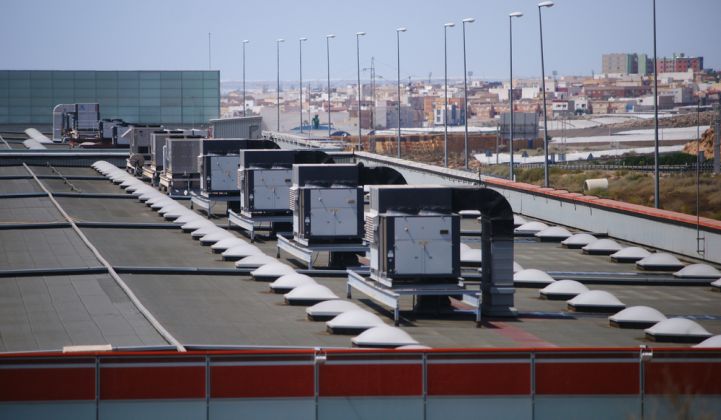The U.S. Department of Energy announced an agreement for new energy efficiency standards for commercial furnaces and rooftop air conditioners on Thursday.
The federal government called the standards the largest in U.S. history for the amount of energy that will be saved: nearly 15 quadrillion BTU over the next 30 years.
“They will save about the same amount of energy as all the coal burned in the U.S. to generate electricity in a year,” according to Rhea Suh, president of Natural Resources Defense Council. “These are very, very promising days in the global fight to slow, stop and reverse climate change.”
Over the next three decades, the increased efficiency will cut 885 million metric tons of carbon dioxide, bringing the DOE more than two-thirds of the way to its goal of reducing carbon pollution by 3 billion metric tons.
Rooftop units cool about half the total commercial floor space in the U.S., according to the DOE. A typical owner would save about $5,000 to $10,000 over the lifetime of the equipment. But the actual savings are higher for an entire AC system, as a typical big-box store may have more than 20 units.
Starting in 2018, rooftop AC will have to be about 13 percent more efficient than it is today. By 2023, it will have to be 25 percent to 30 percent more efficient than current models. Commercial furnaces will have to have thermal efficiencies of at least 81 percent for gas furnaces and 82 percent for oil furnaces by 2023.
Although much of the cleantech industry’s attention was focused on the spending bill and the Investment Tax Credit extension for wind and solar last week, energy efficiency advocates were heralding this announcement. “DOE is ringing in the holiday season with truly monumental energy and economic savings," Andrew deLaski, executive director of the Appliance Standards Awareness Project, said in a statement.
With efficiency advocates and industry stakeholders at the negotiating table, the DOE also made changes to how the efficiency of rooftop units would be calculated. The standard will be based on the integrated energy efficiency ratio (IEER) metric, which captures the AC’s energy use over a range of operating conditions, according to NRDC. The test procedure will also take into account total fan use, which can be a considerable chunk of an air conditioner's total energy use.
The push for standards started five years ago with DOE’s Rooftop Unit Challenge, which called on manufacturers to deliver more efficient systems -- up to 50 percent more efficient than current ASHRAE 90.1 standards -- at competitive prices. In 2012, Daikin's Rebel rooftop unit system was the first to meet challenge. A year later, Carrier met the challenge. Now, five companies have units that meet the specifications.
The standards will be finalized late in 2016, and little opposition is expected.



